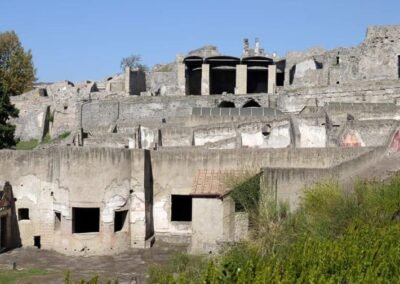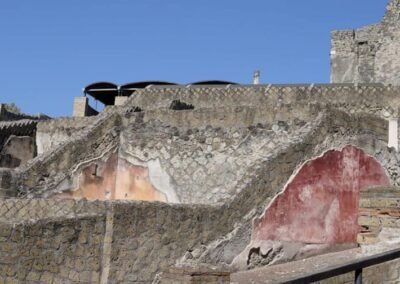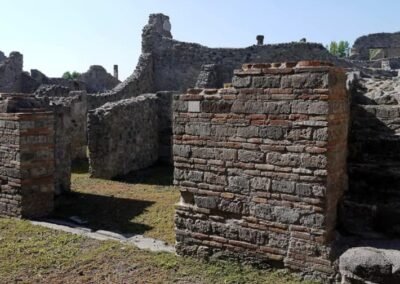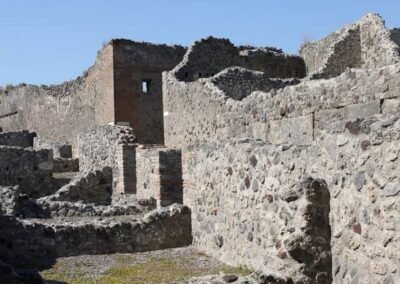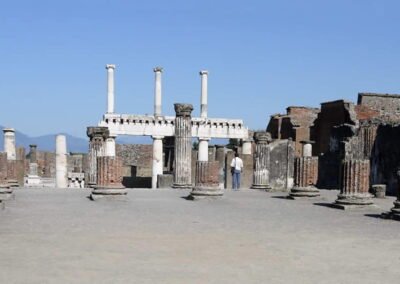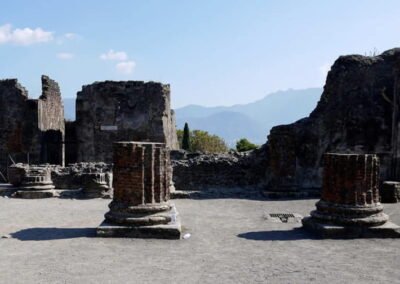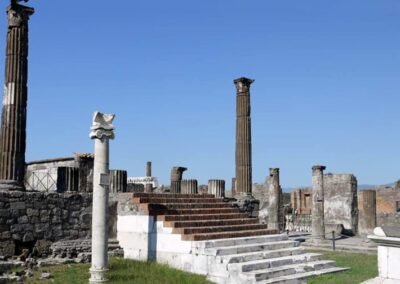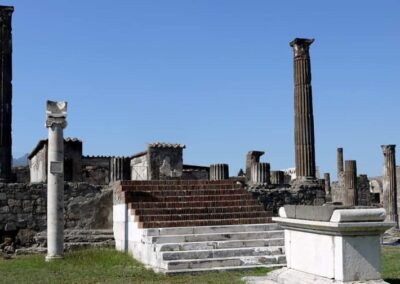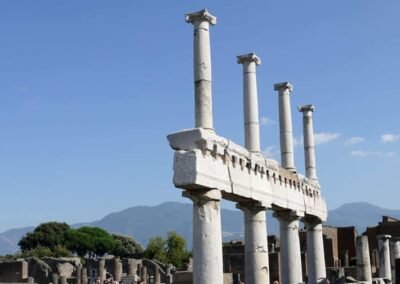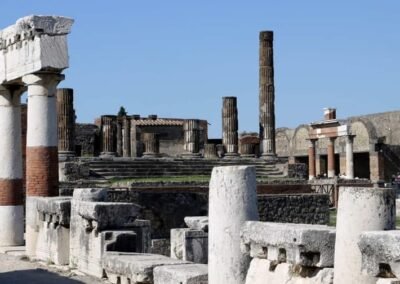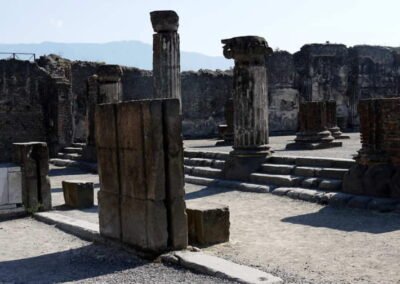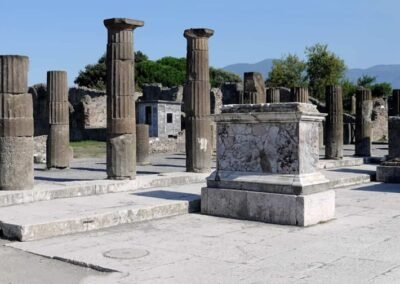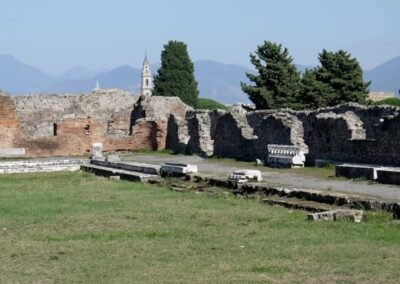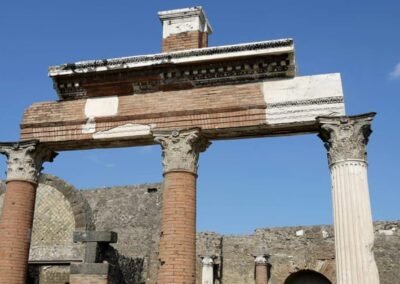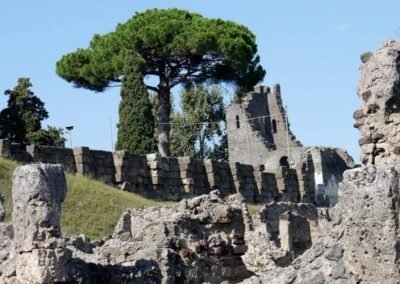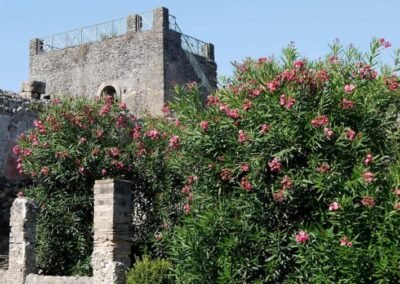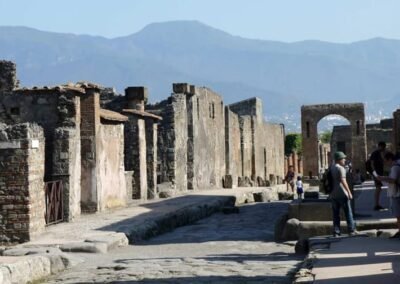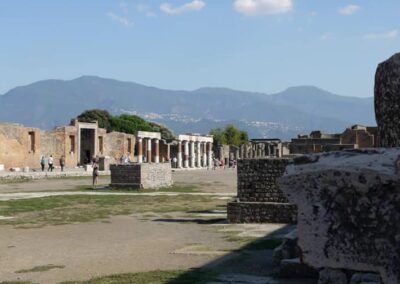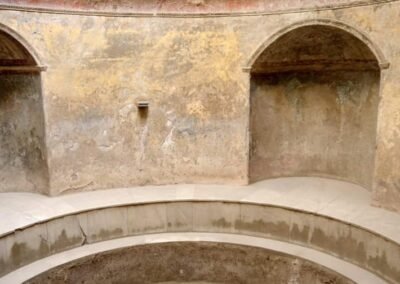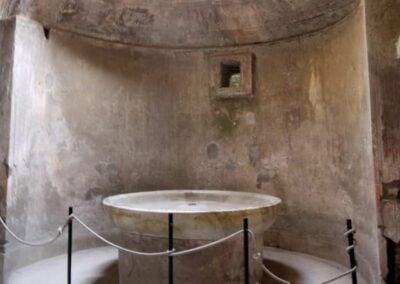HOME
THE REGIONS OF ITALY
PLACES IN ITALY
Italy in Photos
Archaeological Park of Pompeii, 80045 Pompeii Italy (September 2013)
Pompeii
Pompeii, an ancient Roman city near modern-day Naples, Italy, is one of the most extraordinary archaeological sites in the world. What makes it so remarkable is not its size, military importance, or political influence but rather the unique way it was preserved, offering an unparalleled window into the everyday life of an ancient civilization. In AD 79, Mount Vesuvius, a volcano located nearby, erupted with catastrophic force, burying Pompeii under a thick layer of volcanic ash and pumice. This sudden burial, while devastating for the inhabitants, served to encapsulate the city, freezing it in time and protecting its buildings, artifacts, and even its people for nearly two millennia. The eruption of Vesuvius was one of the most infamous natural disasters of antiquity, and the rapidity with which Pompeii and neighbouring cities, such as Herculaneum, were overwhelmed left little time for inhabitants to escape. In just 24 hours, the thriving city was blanketed by volcanic material. Buildings collapsed under the
Rediscovered in the 18th century, the excavation of Pompeii offered an unparalleled opportunity for scholars to study Roman urban life in extraordinary detail. Unlike most ancient ruins, which have been altered by centuries of rebuilding, weathering, and looting, Pompeii offers a unique snapshot of a single moment in time — an entire Roman city virtually untouched since the first century AD. Its streets, homes, shops, and public spaces remain largely as they were on the day of the eruption, providing invaluable insights into Roman architecture, culture, and daily routines. Walking through Pompeii today, visitors can explore a wide variety of structures, ranging from humble dwellings to grand villas, bustling marketplaces to opulent baths, and even temples and theatres. Many of the city’s buildings still bear intricate frescoes, mosaics, and inscriptions that tell the stories of the people who lived and worked there. The level of preservation is astounding walls remain standing, roads are intact, and even everyday objects like pottery, furniture, and food have been found, many in the same position they were left in when the city was buried.
Photo Gallery of Archaeological Park
COPYRIGHT © 2018-2025 ITALY IN PHOTOS - ALL RIGHTS RESERVED
